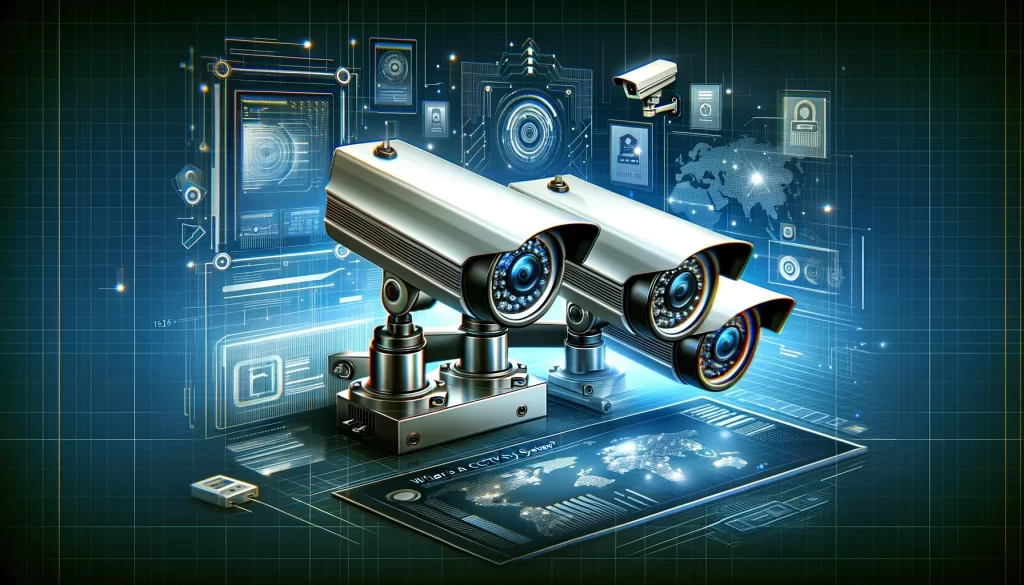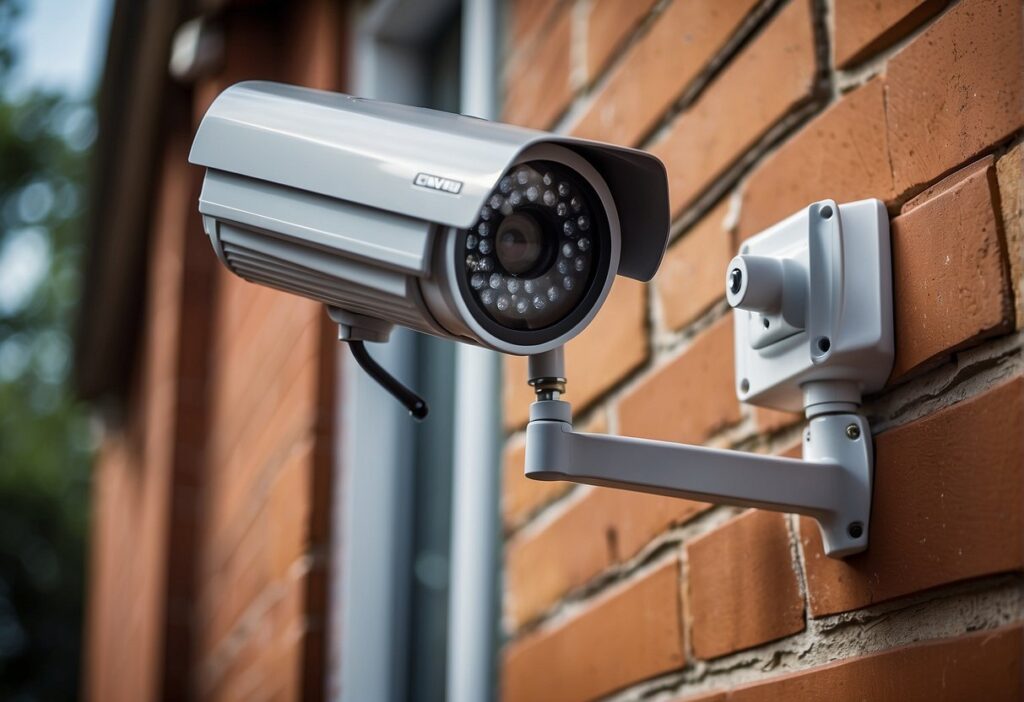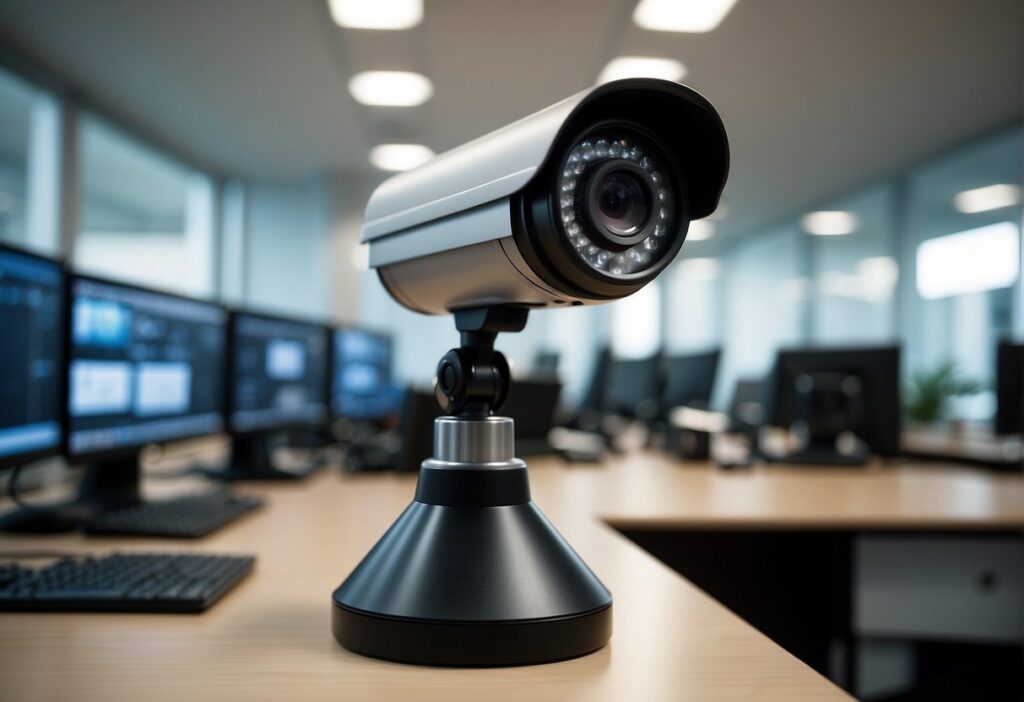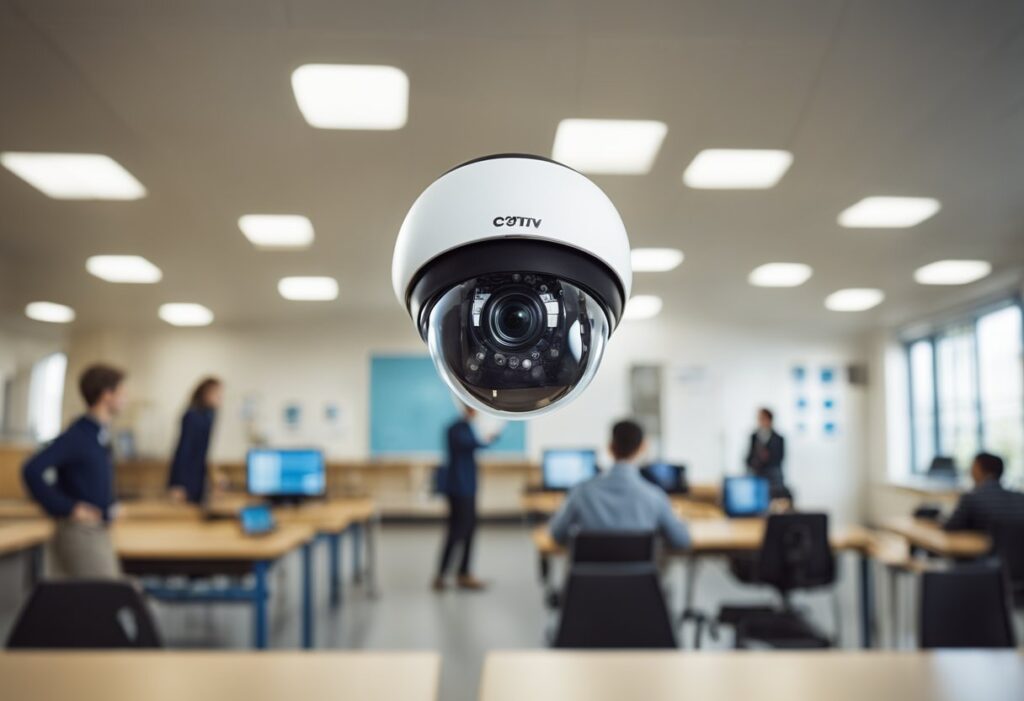What is a CCTV system?
Closed-circuit television, also known as CCTV, is a sophisticated surveillance technology used to monitor a variety of environments and activities.
It operates on a closed network, meaning the video footage is transmitted to a finite number of monitors, allowing for monitoring in real-time or reviewing later.
Key Takeaways
- CCTV systems transmit video to a limited set of monitors for surveillance.
- Strategic placement and design are key for the effectiveness of CCTV.
- CCTV plays a vital role in the security of various environments.
What is a CCTV System?
In the realm of security and surveillance, CCTV systems play a pivotal role in monitoring and protecting property.
They serve as the eyes in the absence of physical presence, recording and transmitting visual data for various purposes ranging from security to operational monitoring.
Components of a CCTV System
- Cameras capture visual information and are the primary devices in a CCTV system
- Recorded data is sent to a Digital Video Recorder (DVR) or network server for IP systems
- Monitors enable users to view live or recorded footage
- Additional equipment like cables, power supplies, and connectors work together
Types of CCTV Cameras
The cameras themselves fall into different categories. Analog cameras transmit video over coaxial cables to the DVR while IP cameras send footage over a network, which can be wireless or wired.
This distinction is important as it affects the installation process, video quality, and system flexibility. Additionally, users might encounter wireless cameras for ease of installation and wired cameras for stability and reliability in their connection.
An Overview of CCTV Technology
CCTV technology has evolved drastically. What started with simple analog cameras has now expanded to sophisticated IP cameras and infrastructures that support real-time monitoring and high-resolution recording.
This advancement empowers businesses and individuals with enhanced surveillance capabilities and the ability to integrate CCTV systems with other security measures for comprehensive coverage.
The flexibility and scalability of modern CCTV technology make it a cornerstone of security strategies in various settings.
The Role of CCTV in Security
CCTV systems are foundational tools for enhancing security and surveillance efforts.
They operate as a significant deterrent to criminal activity, providing real-time monitoring across various environments.
Crime Prevention and Monitoring
CCTV systems are instrumental in crime prevention and monitoring. By providing constant surveillance, they can deter potential criminals, knowing that their actions are likely to be recorded.
Security cameras strategically placed around premises—such as banks and casinos—create a visible security presence. This can discourage illicit behavior and aid police in real-time situations.
Video footage serves as crucial evidence, supporting law enforcement agencies in the identification and prosecution of offenders.
Security in Different Sectors
The use of CCTV spans multiple sectors, emphasizing the versatility of video surveillance in safeguarding assets and people.
In the public sector, cameras monitor public spaces, whereas in the private sector, businesses depend on CCTV to oversee their operations and secure their infrastructure.
Educational institutions utilize CCTV for campus security, while transport vehicles often come equipped with cameras to ensure passenger safety. Each sector adapts CCTV use to its bespoke security needs.
Integration with Other Security Systems
A modern CCTV system is rarely standalone; it often integrates with other security systems like alarm systems and access control to provide a comprehensive security solution.
Video analytics can trigger alerts based on specific criteria, enhancing the capability to respond to incidents quickly.
This integration means that CCTV can be part of a smart, responsive security infrastructure, working in concert with other systems to optimize law enforcement response and monitoring capabilities.
Installation and Operation
The installation and operation of a CCTV system are critical steps that require careful attention to detail to ensure efficient surveillance and security.
Proper setup and management allow for optimal functionality, secure data handling, and system longevity.
Setting Up a CCTV System
Setting up a CCTV system typically involves mounting the video cameras in strategic locations to monitor desired areas.
Cables, either coaxial or network, are essential for connecting cameras to the recording device. For wired systems, coaxial cables are commonly used, while a network cable is necessary for IP-based systems.
A proper setup also includes configuring the recording system for digital recording, which may involve setting up motion detection parameters to optimize storage.
Managing Recorded Data
Once a CCTV system is operational, managing the recorded data becomes a priority. Data is usually stored on local hard drives, digital recorders, or uploaded to cloud storage services.
The integrity of the data must be maintained, which means ensuring that there is sufficient storage space and that the system is recording at the desired quality and frame rate.
Regular checks are recommended to verify that all components are functioning correctly and that the wireless signal strength is consistent for systems not relying on hard-wired connections.
Maintaining and Upgrading CCTV Systems
Maintaining and upgrading CCTV systems are ongoing tasks that ensure continued security effectiveness.
Periodic maintenance includes cleaning camera lenses, checking cables for wear and tear, and testing the system’s functionality. Upgrading might be necessary to enhance capabilities, such as improving digital recording resolution or expanding storage capacity.
It is also important to update firmware and software to protect against new vulnerabilities and keep the system in line with current CCTV security systems standards.
CCTV System Design Considerations
Designing a CCTV system requires meticulous planning to ensure that the desired security coverage is achieved.
The selection of appropriate equipment, the required video quality, and adherence to legal standards are integral to the effectiveness and legality of the video surveillance system.
Selecting the Right Cameras and Equipment
When selecting equipment for a CCTV system, it is imperative to choose the right type of cameras that align with the operational requirements.
Analog CCTV cameras and newer technologies like HD-TVI and AHD (Analog High Definition) offer various levels of image quality and must be matched to the system’s goals.
For instance, environments that necessitate clear identification, such as banks, may require cameras with high-resolution and superior zoom capabilities, which can resolve finer details and provide clear images for possible facial recognition use.
Planning for Quality and Resolution
The resolution of cameras within a CCTV system is measured in TV lines (TVL), which indicates the number of horizontal lines the camera can reproduce.
Standard definitions typically range between 380 to 540 TVL, while high-end cameras can offer 600 TVL or more for high-resolution imagery.
A well-designed CCTV system not only considers the resolution but also factors in the monitor or display resolution, ensuring consistent quality from capture to viewer.
Addressing Privacy and Legal Issues
CCTV systems must be designed with privacy rights in mind, adhering to legislation that protects individuals from unwarranted surveillance.
It is critical for organizations to maintain transparency with the public about the use of CCTV systems. Posting clear signage and ensuring cameras are not positioned in private areas can mitigate legal risks and honor an individual’s privacy.
Implementing a video surveillance system responsibly involves striking a balance between security and privacy rights.
CCTV in Different Environments
CCTV systems are implemented across various settings, each with their unique surveillance needs.
Their deployment varies significantly, depending on the environment and the specific security requirements of the area.
CCTV Usage in Various Industries
- Transportation industry uses CCTV systems to enhance security and monitor passenger flow in airports
- Warehouses and office settings utilize CCTV for inventory oversight and asset protection
- Hotels install cameras in hallways and public areas for guest safety
- Schools focus on monitoring entrances and hallways for student protection
Adaptation to Special Requirements
The adaptability of CCTV systems allows for special customization to suit particular needs. For high-security zones like military facilities, CCTV cameras are often combined with other surveillance technologies for maximum security.
Stadiums and train stations may incorporate thermal imaging and facial recognition technologies to manage large crowds and identify incidents quickly.
In more private settings, such as homes, CCTV systems might integrate motion sensors to provide selective recording and minimize data storage.
Public Surveillance Dynamics
CCTV plays a critical role in public surveillance, helping to prevent crime and improve community safety.
Europe is known for its extensive use of CCTV in public spaces, with millions of cameras operating across various cities. In the realm of public transportation, cameras are employed both inside and outside of the vehicles for passenger safety and to monitor traffic conditions.
Systems used for traffic monitoring at intersections help manage congestion and can be pivotal in accident investigations.
Frequently Asked Questions
CCTV systems are pivotal for enhancing security and monitoring a range of environments. This section aims to address common queries regarding the technology and application of CCTV cameras.
How does CCTV camera technology enhance security monitoring?
CCTV camera technology serves as a deterrent to potential criminals and provides real-time surveillance, significantly enhancing security monitoring. It enables the continuous observation of premises, ensuring quick identification and reaction to any unauthorized activities.
What are the primary functions of a CCTV surveillance system?
The primary functions of a CCTV surveillance system include monitoring activity, deterring criminal behavior, recording footage for future reference, and assisting law enforcement in investigations. CCTV plays a crucial role in ensuring the safety and security of both private and public spaces.
Can you explain the difference between IP CCTV and traditional CCTV systems?
IP CCTV systems transmit video footage over a network, allowing for higher resolution images and remote access to the feed. Traditional CCTV systems, on the other hand, typically use analog cameras that send video over a coaxial cable to a dedicated storage device, often resulting in lower resolution footage.
How does CCTV monitoring contribute to safety in public areas?
CCTV monitoring contributes to safety in public areas by acting as a visible reminder of law enforcement presence and by providing valuable footage that helps in maintaining order, preventing crime, and assisting in the apprehension and prosecution of offenders.
What are the factors that influence the price of a full CCTV camera set?
The factors influencing the price of a full CCTV camera set include the number of cameras, the quality of the image resolution, the presence of advanced features such as motion detection or night vision, and the complexity of the storage and monitoring infrastructure.
What distinguishes a CCTV system from a standard security camera?
A CCTV system typically involves a linked network of cameras with a dedicated monitoring and recording station that is often used in surveillance of both public and private sectors. A standard security camera may operate independently or be part of a smart home system, mostly used for domestic monitoring.



